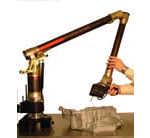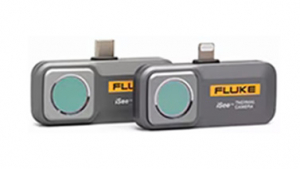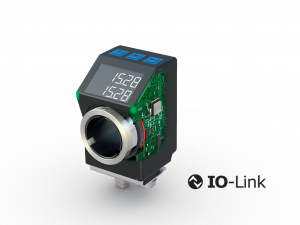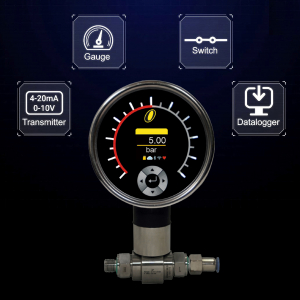NVision Scanner Helps Reverse Engineer Key Impellor at Hydroelectric Plant
16th August 2011
Source:
NVision, Inc

Engineers from NVision, Inc., using the company’s HandHeld Scanner, were able to quickly reverse engineer a large impellor for a major hydroelectric facility, sparing the facility what would have been an extended shutdown had they needed to produce a replacement impellor from scratch. In less than one week, NVision scanned the original impellor and provided a computer model of it to the facility, which then used the model to manufacture a duplicate impellor for installation. In the end, only a relatively short shutdown was necessary to accommodate the scanning and reproduction of the impellor.
The turbines that move the water in hydroelectric plants employ massive impellors to get the job done. In this case, one of the facility’s key impellors had suffered damage that forced the facility to replace it. However, the facility did not possess a computer model of the impellor, which was necessary in order to manufacture a replacement. Without a replacement available, the plant was facing an extended shutdown with potentially high losses in time and money.
The facility’s management contacted NVision to produce a computer model of the impellor. Two days after the initial contact, with a refurbished impellor temporarily in use as a replacement, an NVision engineer was on site to scan the impellor using the HandHeld laser scanner.
The HandHeld scanner is attached to a mechanical arm which moves about the object being scanned, freeing the user to capture data rapidly and with a high degree of resolution. An optional tripod provides complete portability in the field. Intuitive software allows full model editing, polygon reduction, and data output to all standard 3D packages.
“The HandHeld laser scanner was perfect for this project because its ability to move freely around a part makes it possible to reverse engineer components of virtually any size and shape, said Colin Ellis, Engineering Manager at NVision. “In this case, the spacing of the blades was large enough for the laser scanning head to fit through.”
Scanning took eight hours, and included data from three locations situated throughout the part, with data being indexed into the same coordinate system using geometric features. After the data was collected and processed into an STL mesh, a SolidWorks model was created in two days. The facility received the completed model of the impellor just six working days after first calling NVision with their problem. The computer model was used to manufacture an exact duplicate of the original impellor.
“By using laser scanning to reverse engineer the impellor the facility was able to avoid a lengthy and costly shutdown,” said Ellis. “As a side benefit of the scanning, we found that the impellor being used as a replacement was greatly out of balance, with no easy way of manually checking the part to see where the problem lay. Fortunately, using our inspection software, we were able to rotate and compare the data virtually, allowing precise indication of problem areas.”
The facility’s management contacted NVision to produce a computer model of the impellor. Two days after the initial contact, with a refurbished impellor temporarily in use as a replacement, an NVision engineer was on site to scan the impellor using the HandHeld laser scanner.
The HandHeld scanner is attached to a mechanical arm which moves about the object being scanned, freeing the user to capture data rapidly and with a high degree of resolution. An optional tripod provides complete portability in the field. Intuitive software allows full model editing, polygon reduction, and data output to all standard 3D packages.
“The HandHeld laser scanner was perfect for this project because its ability to move freely around a part makes it possible to reverse engineer components of virtually any size and shape, said Colin Ellis, Engineering Manager at NVision. “In this case, the spacing of the blades was large enough for the laser scanning head to fit through.”
Scanning took eight hours, and included data from three locations situated throughout the part, with data being indexed into the same coordinate system using geometric features. After the data was collected and processed into an STL mesh, a SolidWorks model was created in two days. The facility received the completed model of the impellor just six working days after first calling NVision with their problem. The computer model was used to manufacture an exact duplicate of the original impellor.
“By using laser scanning to reverse engineer the impellor the facility was able to avoid a lengthy and costly shutdown,” said Ellis. “As a side benefit of the scanning, we found that the impellor being used as a replacement was greatly out of balance, with no easy way of manually checking the part to see where the problem lay. Fortunately, using our inspection software, we were able to rotate and compare the data virtually, allowing precise indication of problem areas.”
Similar articles
More from NVision, Inc
- NVision's Consulting and Engineering Services Improve Fracking Parts 4th November 2014
- Robots Blaze New Path for Glaze 16th April 2013
- NVision Launches New Project Portal for Clients 24th April 2012
- NVision Helps Reverse Engineer Optical Retailer's Store Display, Enabling Millions in Annual Sales 12th December 2011












Write a comment
No comments